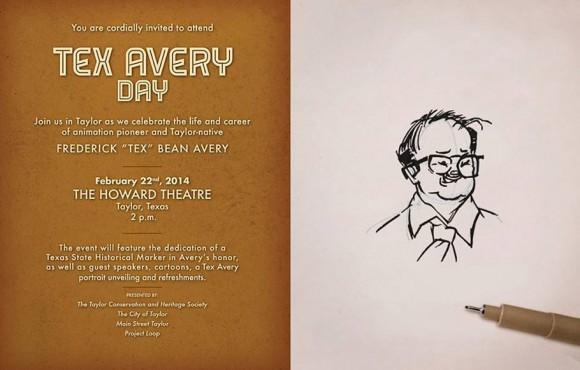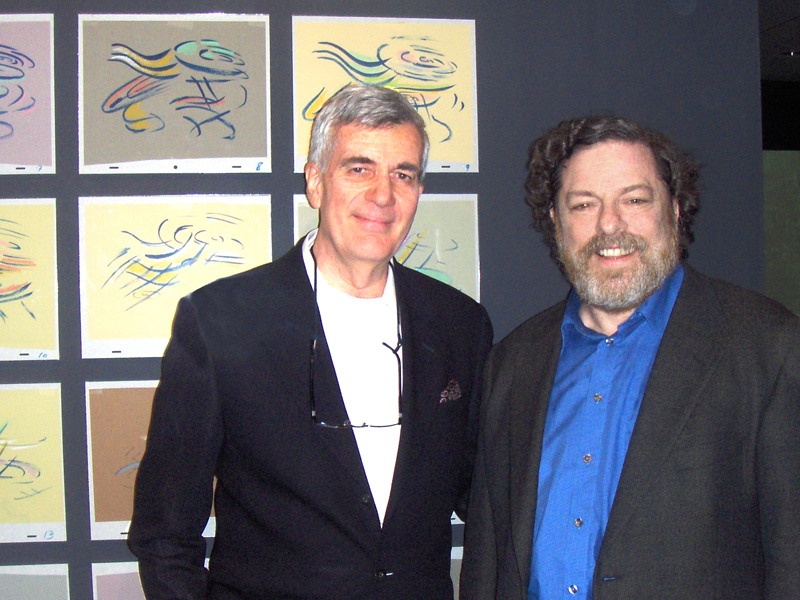Frederick Bean “Tex” Avery is, in my opinion, one of the
greatest animated cartoon directors of all time. His impact on Golden Age
Animation was huge, particularly his work at Warner Bros. and MGM. Tex’s work
is well known for breaking the fourth wall, stretching a joke to its comedic
limit, wild takes, screwing with medium conventions, (since cartoons were
originally aired in theaters, they had stuff like silhouetted audience members
standing up on occasion in the actual cartoon only to be attacked by the animated
character onscreen,) and over-the-top slapstick. He felt that cartoons could
and SHOULD be able to do anything, his philosophy being that animation must go
far beyond live-action and anything a human actor can do in order to get a
laugh.
With this mindset, he had a groundbreaking career. Born in
1908, he started his career at Walter Lantz Studios in the early 30s before
heading over to the Leon Schlesinger studios and getting an animation job at a
building on the Warner Bros. backlot that the animators working there at the
time dubbed “Termite Terrace”. During his stay at Warner Bros., he originally created
two of my favorite cartoon characters, Bugs Bunny and Daffy Duck, in 1940’s “A
Wild Hare” and 1937’s “Porky’s Duck Hunt” respectively. He worked with
animators Bob Clampett and Chuck Jones, and his sense of humor rubbed off on
them as well. After splitting from Warner Bros. in 1941 after a disagreement
with Leon Schlesinger regarding the short “The Heckling Hare”, Tex joined MGM
in 1942, and gave the world such creations as Droopy, Screwy Squirrel, Red Hot
Riding Hood, and many, MANY incredibly hilarious shorts. After he ended his
tenure there in 1954, (with his last few cartoons there released in 1955,
including two that were co-directed by animator Michael Lah,) he returned to
the Lantz studio for a short while. He spent the rest of his career working on
animated television commercials and writing gags for Hanna-Barbera cartoons
like Kwicky Koala, before dying of liver cancer in 1980.
He had an impact on many in the animation community. Aside
from Clampett and Jones, his cartoons inspired Bill Hanna, Joe Barbera, Eric
Goldberg, John Kricfalusi, and Bill Plympton, among many others, and while he never
had as many accolades as, say, Chuck Jones, he did manage to snag some Oscar
nominations and he was honored by the Library of Congress. Sadly, his work at MGM has
been barely released on DVD, which, to me, is a crime against decency.
I managed to see a ton of his work thanks to various
sources. Many of them I saw as a kid thanks to his shorts being featured on VHS
(which I have rented and watched many times,) and on Cartoon Network and
Boomerang, and later on, I got to see some of these shorts on Youtube. Needless
to say, as someone who loves both cartoons and surreal, outlandish comedy, I
absolutely ADORE his work. Even to this day, his cartoons are still as
relentlessly creative and funny as they were back when they were originally
made. Sure, some of the gags might be a little dated, particularly the WWII
gags and the more racial stuff, but they still hold up well, in my opinion.
This Saturday, February 22, Tex’s childhood home of Taylor,
Texas, will declare Tex Avery Day. It will take place at the Howard Theatre,
feature a dedication of a Texax State Historical Marker in Avery’s honor, guest
speakers, screenings of his cartoons, and a portrait unveiling. I found out
about this, thanks to Cartoon Brew, and since I’m currently living in Austin,
I’m planning to attend as both an aspiring animator/cartoonist and a huge Tex
Avery fan. It’s only a little more than a half-hour’s drive from where I’m
living, and hopefully, it’ll be worth the visit.









